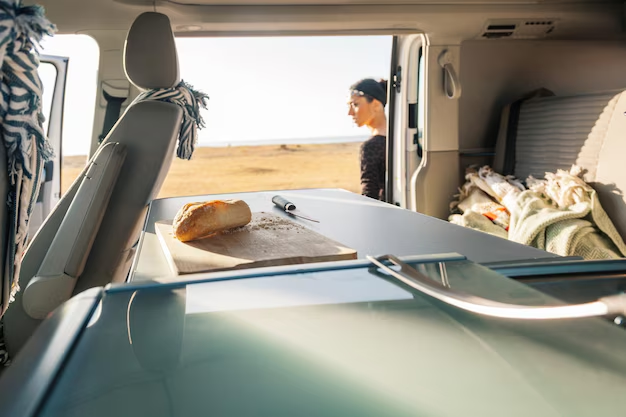Say Goodbye to Your RV Fridge: A Comprehensive Guide to Removal
Have you ever wondered what it takes to remove a refrigerator from your RV? Whether it's because your fridge has seen better days, you want to upgrade, or you're simply looking to maximize space, removing an RV refrigerator can seem like a daunting task. Fear not! This comprehensive guide will walk you through the steps, ensuring you approach the task with confidence and clarity.
Why Remove Your RV Refrigerator?
Considering New Opportunities
Removing your RV refrigerator can open up new possibilities for space and functionality within your mobile home. Whether you're looking to upgrade to a more energy-efficient model or repurpose the space for storage, understanding the process is the first step.
Experiencing Technical Issues
Many RV owners face technical issues with their fridges over time. From cooling inefficiencies to electrical malfunctions, these issues might prompt the need for removal or replacement.
Upgrading for Efficiency
With advancements in technology, newer RV refrigerators often offer better energy efficiency, which can result in long-term cost savings and enhanced performance.
Preparing for the Task
Tools You'll Need 🛠️
Before beginning, ensure you have the necessary tools and safety gear:
- Screwdriver set: Both flat-head and Phillips-head are typically required.
- Wrench: Adjustable or socket sets could be handy.
- Multimeter: For checking electrical connections.
- Protective gloves and eyewear: Safety first!
- Dolly: Helpful for transporting the fridge once removed.
Safety Precautions
Disconnect the power: Before any work begins, ensure that your RV is not connected to a power source. This means unplugging from shore power and disconnecting any auxiliary power supplies like solar panels.
Ventilation: Some refrigerators use propane, so ensure proper ventilation to avoid any fumes during disconnection.
Step-by-Step Guide to Removing an RV Refrigerator
1. Empty and Defrost
Begin by clearing the refrigerator of any contents. Once emptied, it’s wise to defrost the appliance. This can prevent water leaks and makes the unit lighter and easier to handle.
2. Disconnect Power
Use a multimeter to ensure the refrigerator is not receiving power. Safety Tip: Always double-check before proceeding.
3. Turn Off the Propane
If your RV fridge runs on propane, turn off the tank and ensure that the propane supply is securely shut. Disconnect it carefully and cap it off to prevent leaks.
4. Remove Mounting Bolts
Locate the bolts that secure your refrigerator to the cabinetry or floor. Using your wrench or screwdriver, carefully remove these bolts. Tip: Keep these in a labeled bag for potential future use.
5. Detach the Ventilation
Fridges in RVs often have ventilation systems for cooling. Carefully remove the exterior vent by unscrewing it. Inside, disconnect any clapboards or protective barriers.
6. Disconnect Electrical Connections
Locate and disconnect the DC power plug and other electrical connections. Note the wiring configurations for easy reinstallation if necessary.
7. Slide Out the Refrigerator
Once everything is disconnected and loose, carefully slide the fridge out of its compartment, using a dolly if necessary. Ensure you have a clear path and assistance, as some models can be very heavy.
8. Final Check
With the fridge out, clean the area and check for any signs of damage or wear that might have been hidden. This is also a good time to inspect the flooring for any potential repairs.
Summary Checklist 📝
- 🔨 Tools: Gather all necessary tools and safety gear.
- ✔️ Safety: Disconnect power and turn off propane.
- 🔄 Preparation: Empty, defrost, and ensure ventilation.
- 🔧 Process: Remove bolts, vent, and disconnect.
- 🧼 Post-Removal: Clean area and inspect for damage.
When It's Time to Upgrade
Choosing the Right Replacement
Consider new, energy-efficient models if you’re looking to replace your old refrigerator. Factor in size, power source, and cooling capacity relative to your needs.
Installation Considerations
When installing a new fridge, ensure it's correctly integrated into your RV’s power and ventilation systems. Professional installation is recommended if you’re unsure about handling these on your own.
Maximizing the New Space
If you choose not to install a new fridge immediately, think about how to utilize the newfound space. Many RV owners repurpose it for storage, laundry facilities, or even a workspace.
Aftercare and Maintenance Tips
Regular Inspection
Keeping your new or existing systems in check can prevent future issues. Regular inspections can address minor problems before they escalate.
Cleaning and Ventilation
Ensure that your refrigeration area remains clean and well-ventilated. Blocked vents can affect performance and lead to inefficiencies.
Professional Help
When in doubt, seek professional assistance. Experts can provide insights and solutions tailored to your specific situation.
Removing your RV refrigerator doesn't have to be an overwhelming task. With the right preparation and attitude, this project can be not only manageable but also an opportunity for innovation and improvement within your mobile living space. Whether upgrading or simply making room for new adventures, tackling the removal process with the steps outlined will ensure a smooth transition and open up a world of possibilities within your RV. Safe travels and happy camping!
